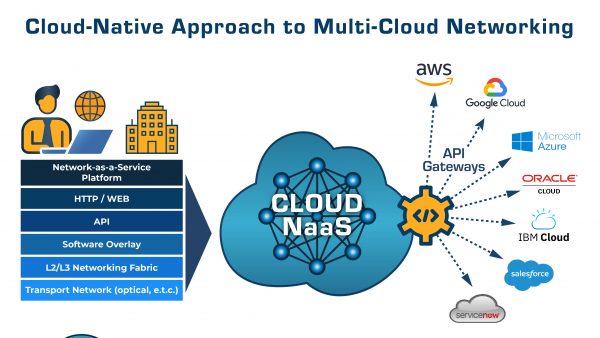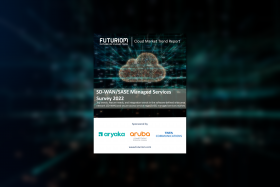The Future of Multi-Cloud Networking Report 2020

The Great Cloud Wave has accelerated in 2020. The COVID-19 pandemic and the ensuing business crisis have demonstrated the utility of using cloud technology to scale and support virtual work and applications.
As the move to the cloud accelerates, it's going to put more emphasis on the need for high-performance, multi-cloud networks. Enterprises and other organizations, including those in government and education, want to build a fully distributed applications environment that can run in private clouds, public clouds, and hybrid clouds. But so far, the network has been a big barrier to that. Legacy network architectures are designed for self-contained enterprise networks and private clouds. How does the network support multi-cloud?
Futuriom has spent months delving into this topic, interviewing dozens of end users and technology visionaries as well as collecting survey data from end users. As the Great Cloud Wave unfolds, we have some answers about what it means for multi-cloud networks.
Futuriom research shows that this new phase of accelerated cloud growth will drive demand for solutions providing high-performance, secure multi-cloud networking (MCN), which can furnish on-demand, secure connectivity to applications regardless of the clouds in which they reside.
This entire report is available to Futuriom's Cloud Tracker Pro subscribers, but if you are interested in the highlights of the research, you can see that below.
Special thanks to our sponsors: Alkira, Arrcus, Aryaka Networks, Aviatrix, Itential, NetFoundry, PacketFabric, Pureport, and Volterra.

Report Highlights
- The Great Cloud Wave – the shift of IT applications to multiple and hybrid clouds – is creating demand for a new multi-cloud networking (MCN) solutions than can unify networking infrastructure among cloud constructs.
- Enterprise IT, Network, and Security managers want a unified networking infrastructure that can connect with multiple cloud and integrate with their existing networking and IT investment. Futuriom collected this feedback from a survey of 150 enterprise end users with technology roles, qualified as Director-level and above.
- The key drivers of MCN include providing more options for multi-cloud and hybrid cloud (69%), consolidating data-center with public cloud infrastructure (69%), improving the performance of distributed applications (65%), and managing security policy and visibility (61%), according to Futuriom survey work.
- MCN solutions will be used to create software-defined virtual networks that can integrate private data center, public cloud, and enterprise networks. This will drive the uptake of Network as a Service (NaaS), software-defined networking (SDN), and Applications Programming Interfaces (APIs) to connect and integrate existing networks and cloud platforms
- Top use cases of MCN, according to end-user survey feedback, include security integration and virtual firewall management, multi-cloud application integration and performance assurance, network visibility, security analytics, and unified multi-cloud network monitoring and management.
Companies Covered in This Report
Alkira, Arrcus, AT&T (T), Aviatrix, Amazon (AMZN), Aryaka Networks, Cato Networks, Ciena (CIEN),Cisco (CSCO), Citrix (CTXS), Digital Realty (DLR), DriveNets, Equinix (EQIX), Fortinet, Google (Alphabet) (GOOGL), Itential, IBM, Juniper Networks (JNPR), Masergy, Megaport, Microsoft (MSFT), NetFoundry, Nokia (NOK), PacketFabric, Pureport, Tata Communications, Teridion, Verizon (VZ), Versa Networks, Volterra, VMware (VWW)
Pages: 24 pages
Price: Included with annual Cloud Tracker Pro subscription of $895.
























